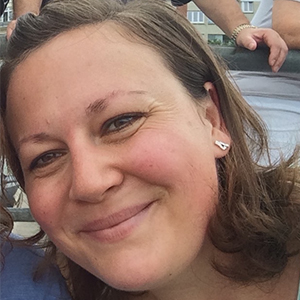Technical communication is an essential part of UX. Anything that involves a user interacting with an interface is inherently part of the user’s experience. Unfortunately, in many organisations, technical communicators are often the last to know about the UX team’s projects. Interestingly enough though, technical communicators are usually the first ones to explain usability aspects.
In order for technical communicators to explain certain facts to somebody else they need to understand how things work. When they’re involved at the end of the process they don’t have a chance to give valuable input and feedback as they should.
So, how do we tackle this at ePages?
Team constellation
Our Usability Expert Anja is part of Product Management. Her position enables first-hand knowledge of business goals and user requirements, while allowing her to focus on delivering a product with an excellent UX. Additionally, she is closely connected with the development teams within R&D by participating in reviews and plannings. She also attends meetings with the UI designers.
I’m the Technical Writer and am part of R&D. Thus, I’m automatically in close contact with the development teams. I join their reviews, and sometimes their plannings, and daily standups. In order to stay informed about the latest plans and changes, I have regular meetings with the Product Owners.
At a loss for words
We are adding new features: error messages and tooltips. Both need wording for the users to understand the software. For our developers this is a challenge. They write great code, but they are neither linguists nor usability experts. This is why, for many of them, I’m the primary contact on these matters. The developers provide me with a draft text, or a rough context, and I then put every effort into understanding the topic. In many cases, I’m at a loss for words because it is not just the plain text I need. I need a bigger picture, the whole context, a UI. With the help of a virtual machine, or detailed screenshots, I can get a better idea and see how things fit together. That way I can come up with a meaningful wording.
In the same boat
By now it’s pretty obvious why UX and Technical Communicators should work closely together, isn’t it? In the last paragraph, the keywords user, usability, wording, and UI appeared at frequent intervals.
With each wording request from one of the development teams it got even clearer to me that this is Anja’s and my own common challenge. I started contacting her with several questions and comments that were related to the UI. And soon we worked together hand in hand.
Usually, I’m informed by the PO or one of the team members that they’re working on a new feature and need wording support. Sometimes the PO invites Anja and me for a short info session to explain the context, and what exactly the team requires from us. I will ask the team for detailed screenshots, or access to a virtual machine. Anja will prepare UI mocks, if not already available. Subsequently, I will create the needed texts, and we will discuss the whole thing together. This is sometimes quite time-consuming, as we raise new questions, or question one or other thing in general. In the end, we have a text that matches the UI, is agreed with the Product Owner, and then shared with team.
Looking ahead
We have a brand new software product in the pipeline. UX and Technical Communication are an inherent part of the development process from the very beginning. In order to have consistent and high-quality texts, we are currently establishing a Terminology Database where we track all the new terms, and make them available to the company. Furthermore, we’re working on an Editorial Guide to define standards for producing UI texts.
Dream team
Working together on all those tasks is really great fun, and we learn a lot about the software. Our continuous and close cooperation make us a well-functioning team. We will rock on!

